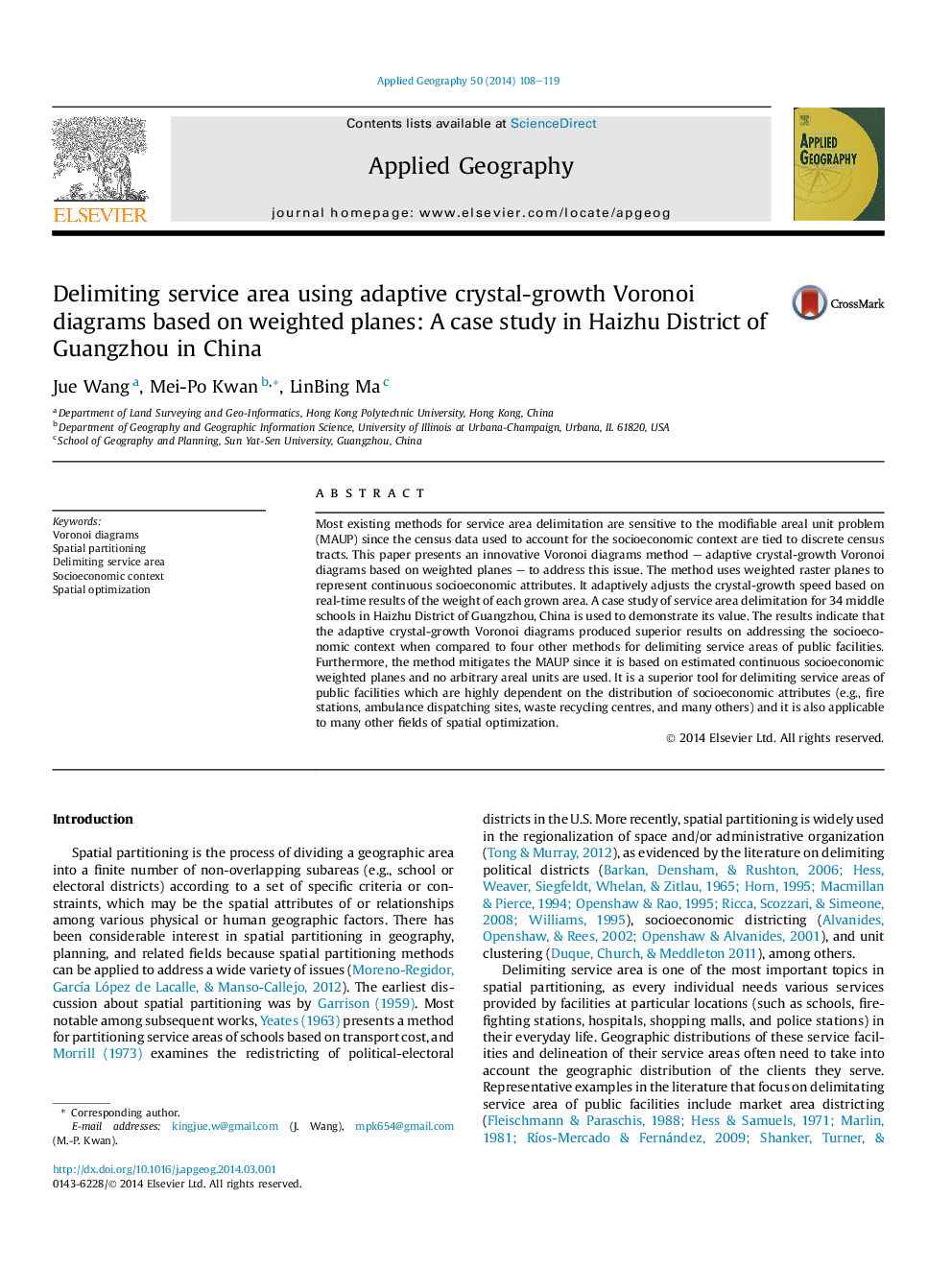| کد مقاله | کد نشریه | سال انتشار | مقاله انگلیسی | نسخه تمام متن |
|---|---|---|---|---|
| 83542 | 158725 | 2014 | 12 صفحه PDF | دانلود رایگان |

• This paper presents a new Voronoi diagrams method for delimiting service areas.
• The method is called the adaptive crystal-growth Voronoi diagrams.
• It distributes spatially continuous attributes to weighted raster planes.
• A case study of 34 middle schools in Guangzhou, China demonstrates its value.
• The method is superior for delimiting service areas relative to four other methods.
Most existing methods for service area delimitation are sensitive to the modifiable areal unit problem (MAUP) since the census data used to account for the socioeconomic context are tied to discrete census tracts. This paper presents an innovative Voronoi diagrams method – adaptive crystal-growth Voronoi diagrams based on weighted planes – to address this issue. The method uses weighted raster planes to represent continuous socioeconomic attributes. It adaptively adjusts the crystal-growth speed based on real-time results of the weight of each grown area. A case study of service area delimitation for 34 middle schools in Haizhu District of Guangzhou, China is used to demonstrate its value. The results indicate that the adaptive crystal-growth Voronoi diagrams produced superior results on addressing the socioeconomic context when compared to four other methods for delimiting service areas of public facilities. Furthermore, the method mitigates the MAUP since it is based on estimated continuous socioeconomic weighted planes and no arbitrary areal units are used. It is a superior tool for delimiting service areas of public facilities which are highly dependent on the distribution of socioeconomic attributes (e.g., fire stations, ambulance dispatching sites, waste recycling centres, and many others) and it is also applicable to many other fields of spatial optimization.
Journal: Applied Geography - Volume 50, June 2014, Pages 108–119